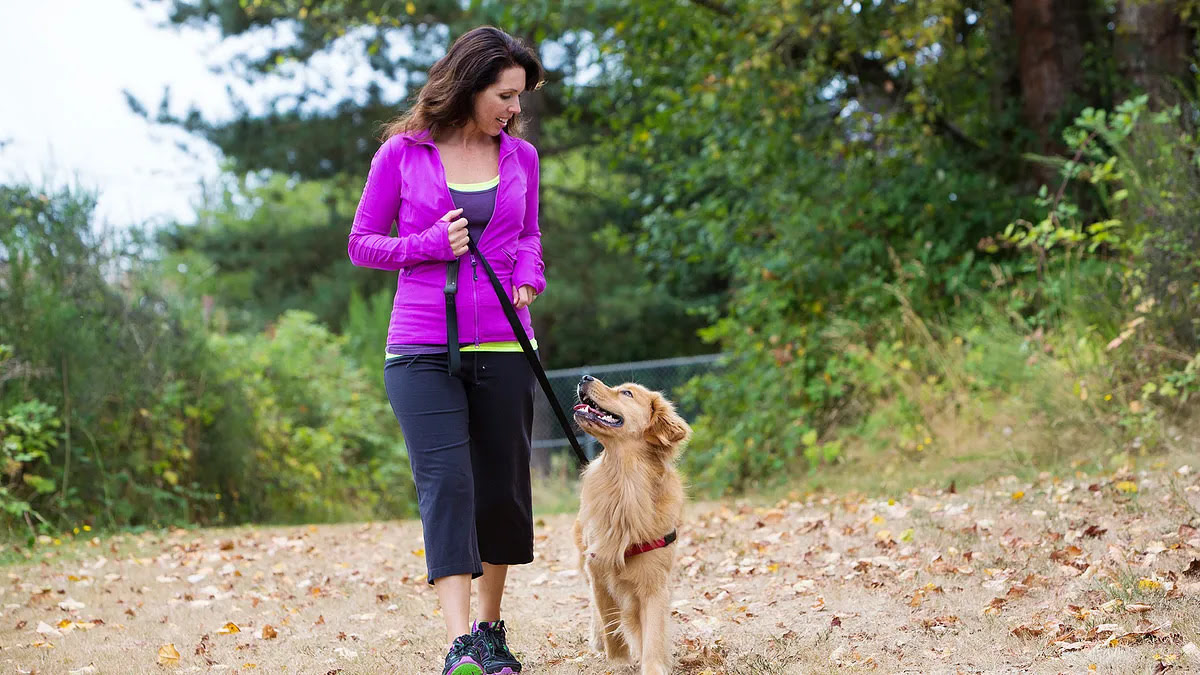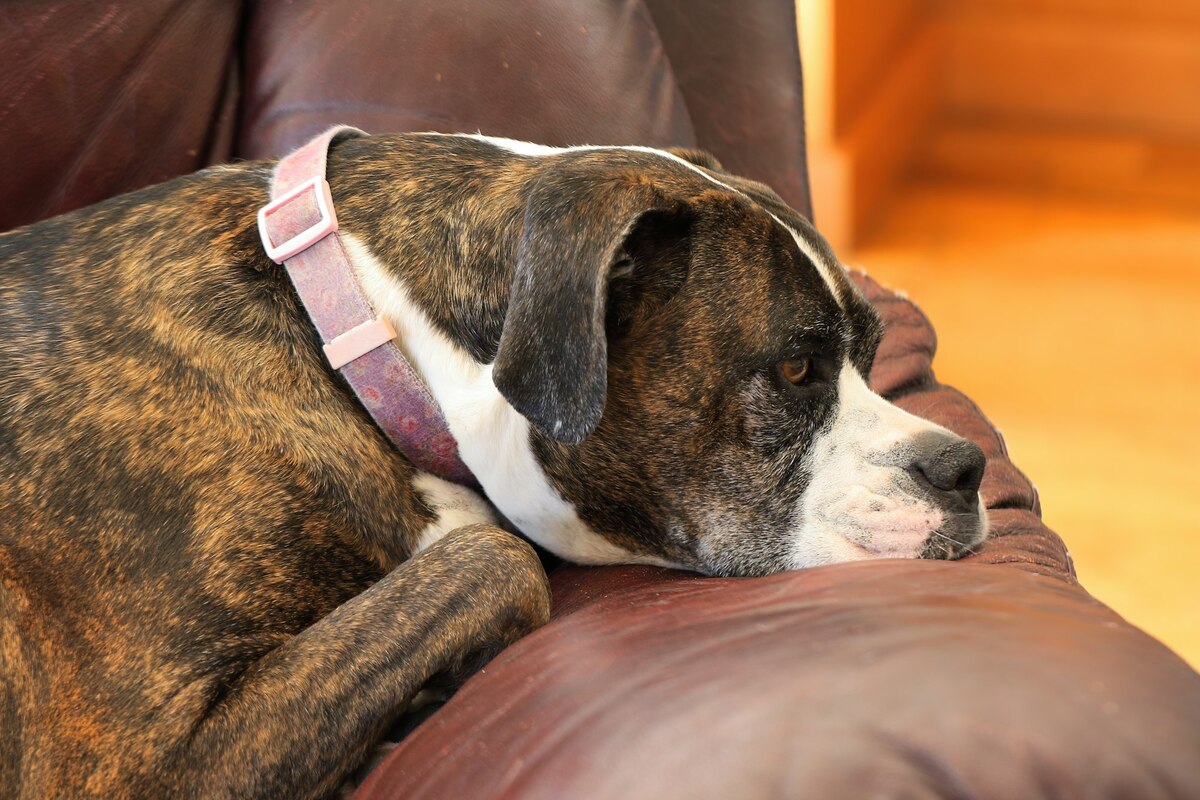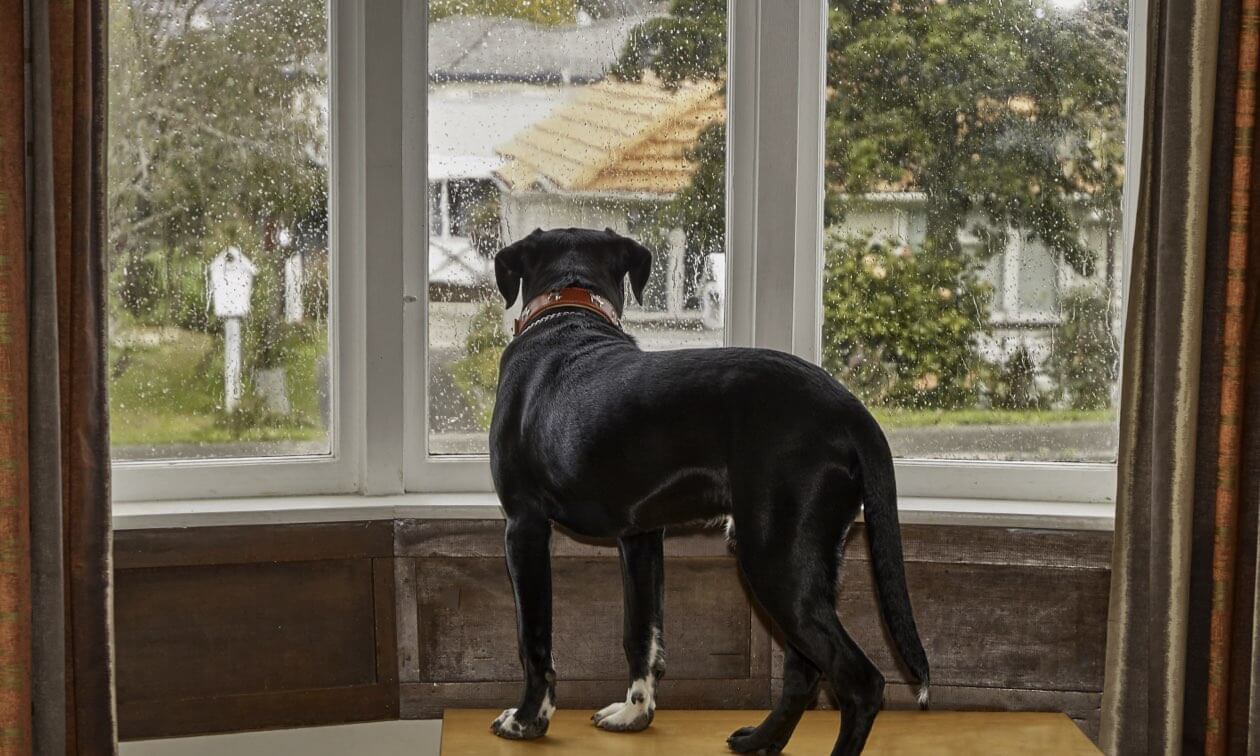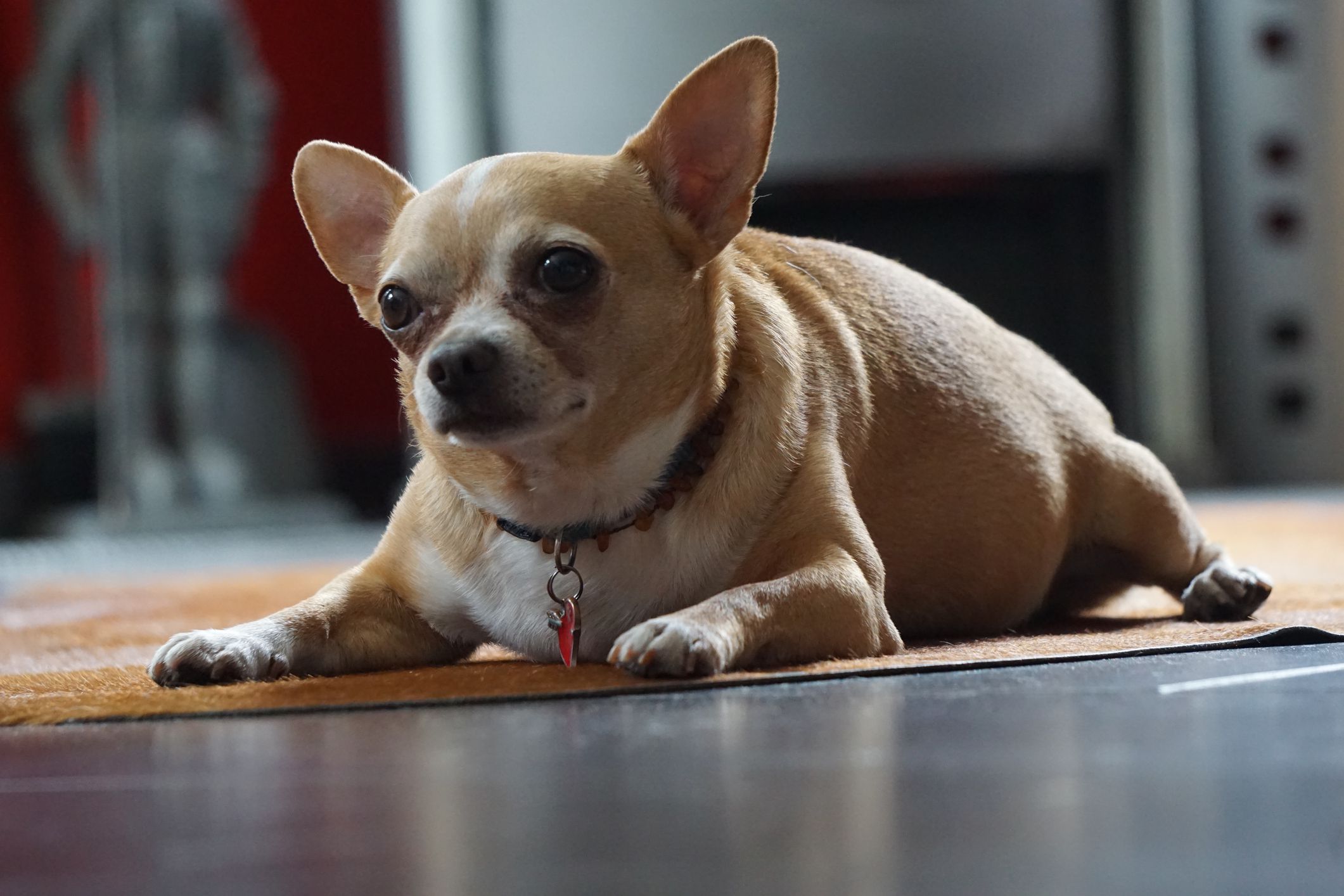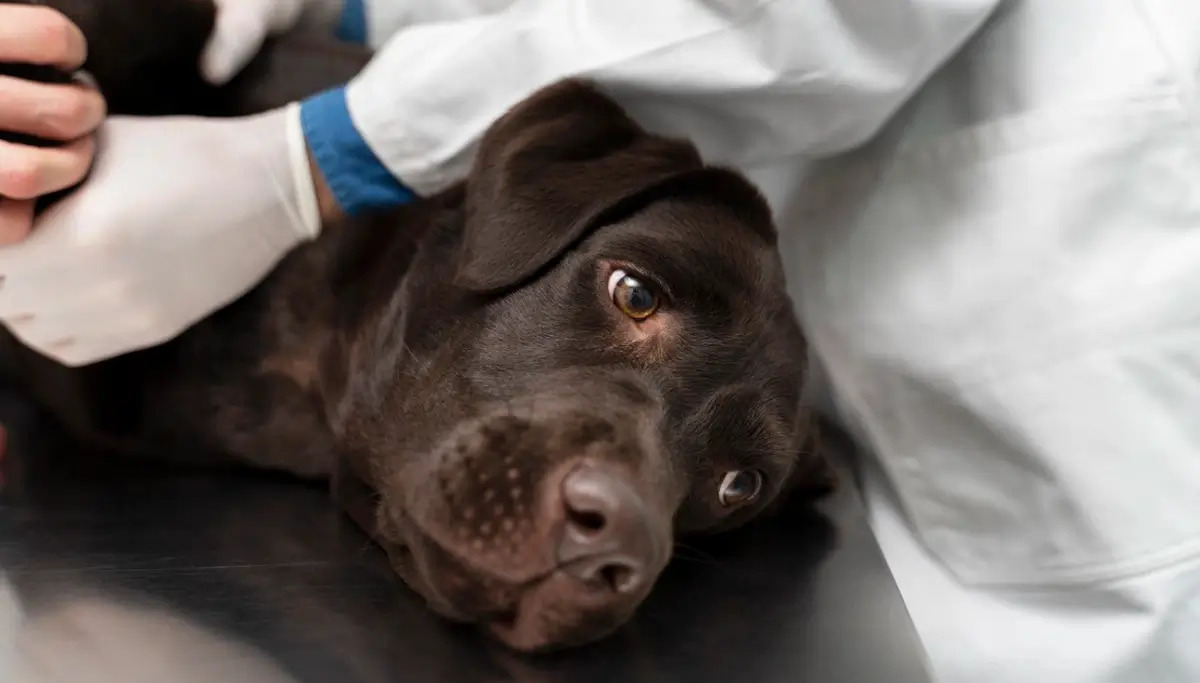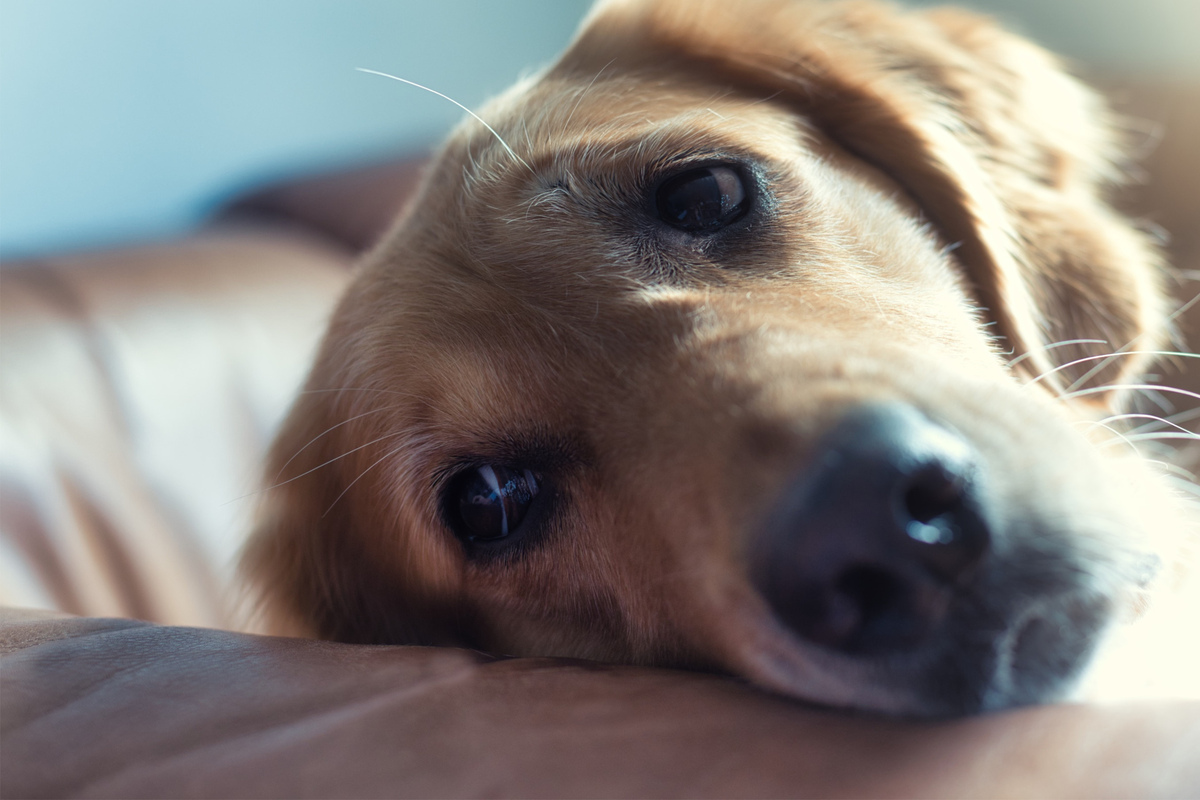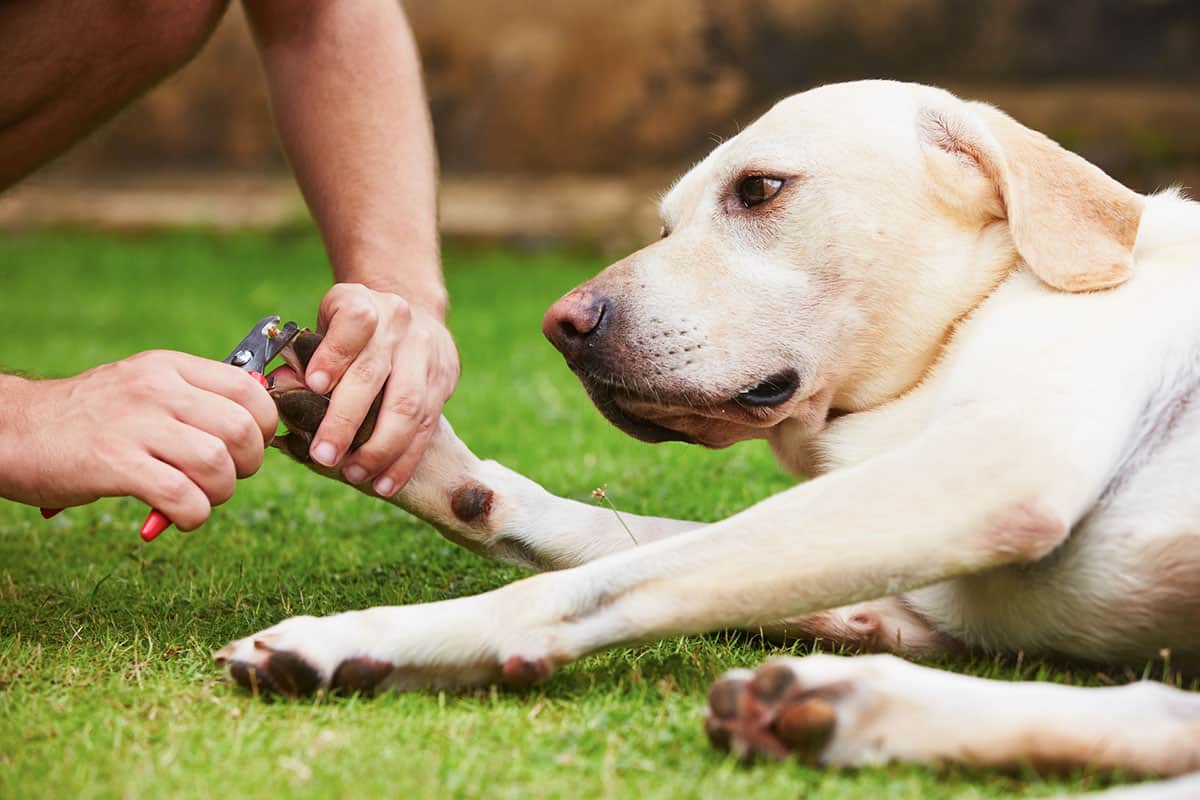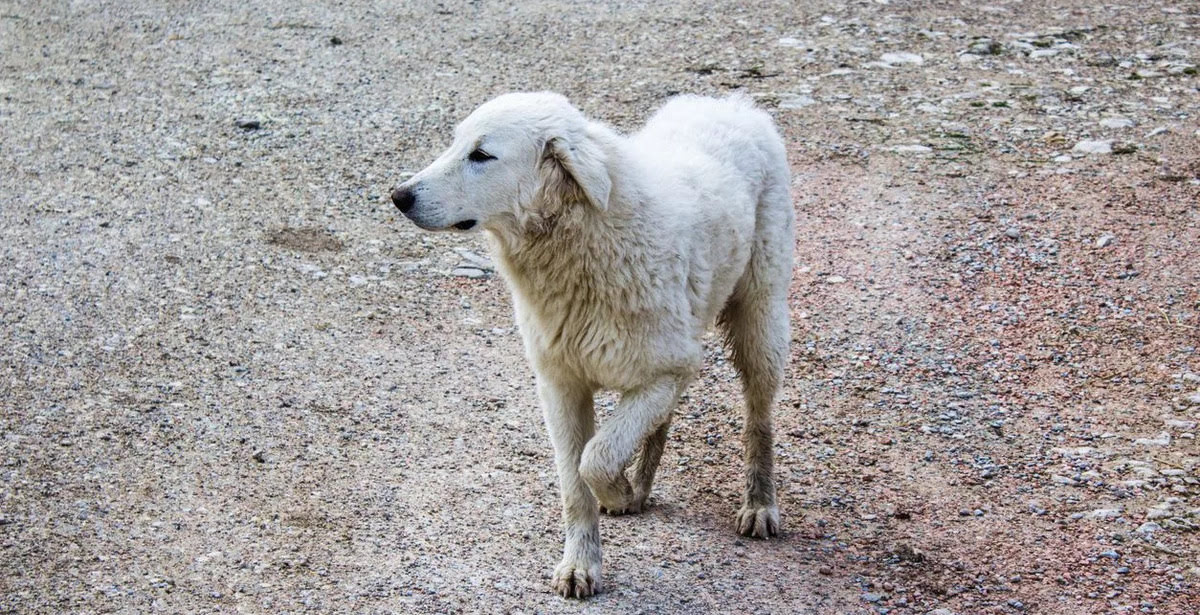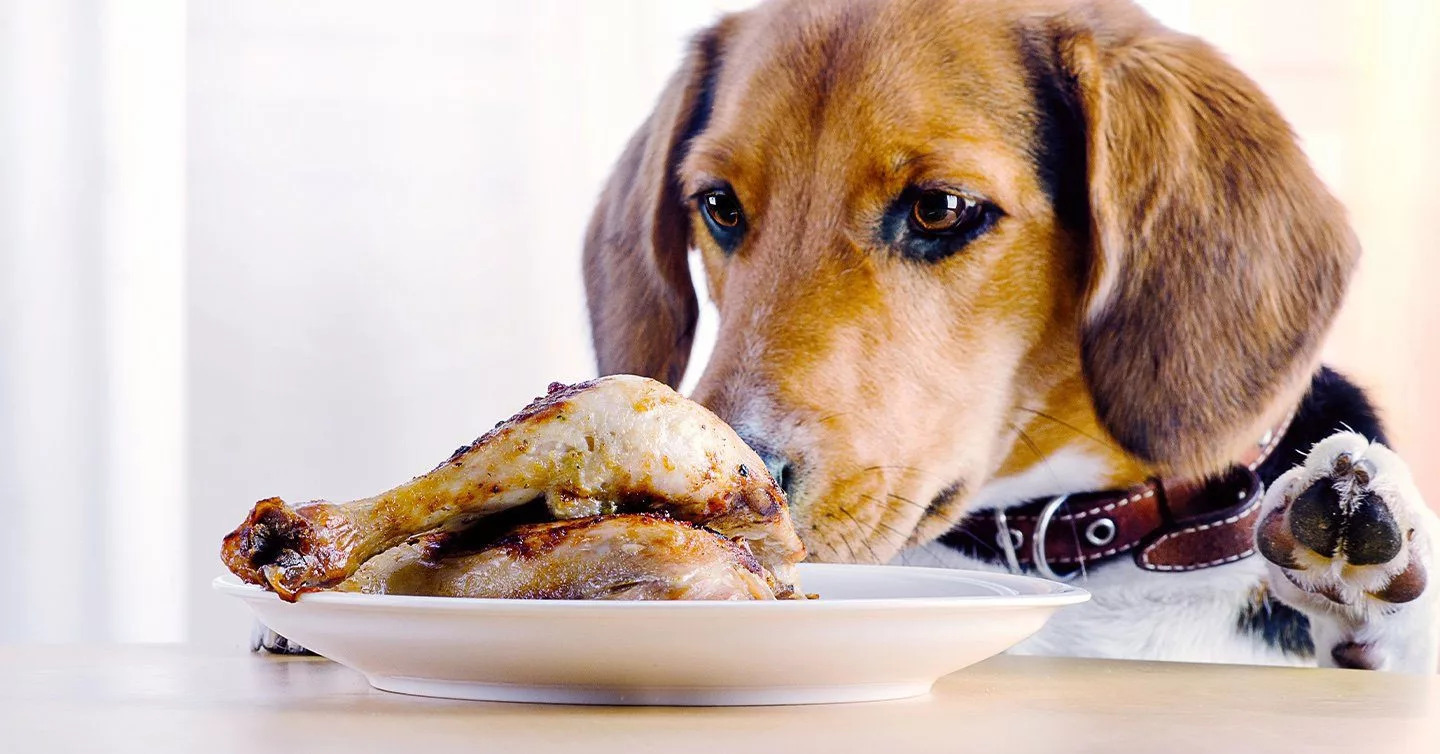Home>Health & Wellness>Behavior & Cognitive Care>My Dog Has Severe Separation Anxiety When Boarding
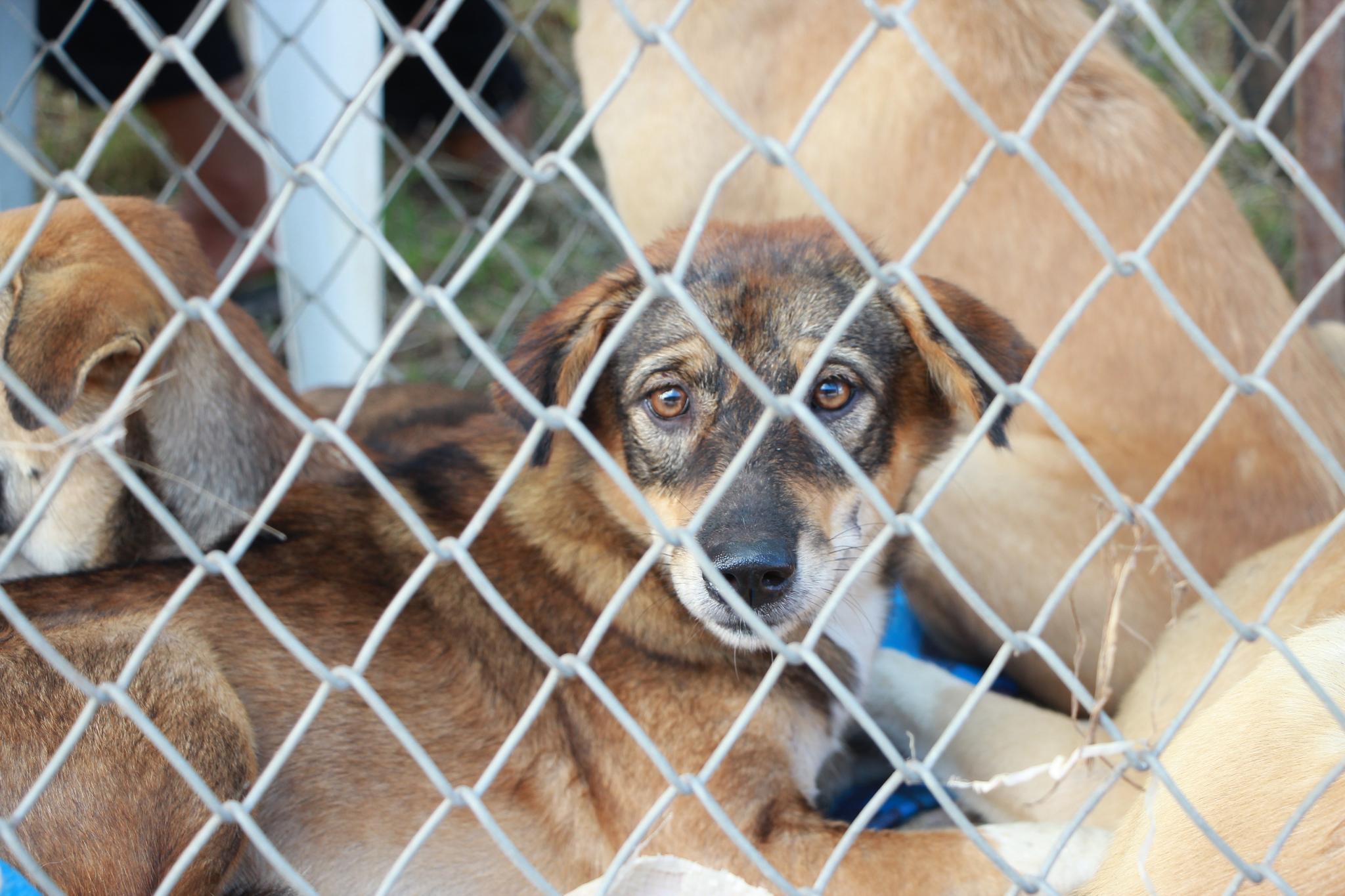

Behavior & Cognitive Care
My Dog Has Severe Separation Anxiety When Boarding
Published: January 30, 2024
Discover effective behavior and cognitive care strategies for managing your dog's severe separation anxiety when boarding. Expert tips and solutions to ease your pet's distress.
(Many of the links in this article redirect to a specific reviewed product. Your purchase of these products through affiliate links helps to generate commission for Pawsomeoldies.com, at no extra cost. Learn more)
Table of Contents
- Understanding Separation Anxiety in Dogs
- Signs and Symptoms of Severe Separation Anxiety in Dogs
- Causes of Separation Anxiety in Dogs
- Coping Strategies for Dogs with Severe Separation Anxiety
- Tips for Boarding a Dog with Severe Separation Anxiety
- Working with a Professional to Address Your Dog's Separation Anxiety
Understanding Separation Anxiety in Dogs
Separation anxiety is a common behavioral issue in dogs, characterized by distress and anxiety when they are separated from their owners or left alone. This condition can manifest in various ways, such as excessive barking, destructive behavior, pacing, or attempting to escape. It's essential for dog owners to recognize the signs of separation anxiety to provide the necessary support and intervention for their furry companions.
Dogs are social animals that form strong emotional bonds with their human caregivers. When these bonds are disrupted, dogs can experience significant stress and anxiety. Understanding the underlying causes of separation anxiety is crucial in addressing this issue effectively. It's important to note that separation anxiety is not a reflection of disobedience or spite; rather, it stems from a deep emotional dependence on their owners.
Recognizing the signs of separation anxiety is the first step in helping dogs cope with this condition. Some common indicators include incessant barking, destructive chewing, urination or defecation indoors, and attempts to escape confinement. These behaviors often occur shortly after the owner's departure and can persist throughout the time the dog is left alone.
Moreover, it's important to differentiate between separation anxiety and general misbehavior. While destructive behavior and soiling may occur in both scenarios, the underlying motivation is distinct. Dogs with separation anxiety exhibit these behaviors specifically in the absence of their owners, whereas general misbehavior may happen at any time.
Understanding the emotional turmoil experienced by dogs with separation anxiety is essential for developing effective coping strategies. By acknowledging the distress and fear that these dogs endure when separated from their owners, caregivers can approach the situation with empathy and patience. This understanding forms the foundation for implementing appropriate interventions to help dogs manage their anxiety and feel more secure when left alone.
In essence, understanding separation anxiety in dogs involves recognizing the emotional distress and behavioral manifestations that stem from their deep bond with their owners. By acknowledging the unique challenges faced by dogs with separation anxiety, caregivers can take proactive steps to provide the support and reassurance needed to help their canine companions overcome this challenging condition.
Signs and Symptoms of Severe Separation Anxiety in Dogs
Separation anxiety in dogs can manifest in a variety of distressing behaviors, serving as poignant indicators of the emotional turmoil experienced by our canine companions. Recognizing these signs is crucial for identifying and addressing severe separation anxiety in dogs.
-
Excessive Vocalization: Dogs with separation anxiety may engage in persistent barking, howling, or whining when left alone. This vocalization often reflects their distress and attempts to seek the presence of their owners.
-
Destructive Behavior: Dogs experiencing severe separation anxiety may exhibit destructive tendencies, such as chewing on furniture, doors, or personal belongings. This behavior is not driven by malice but rather by the overwhelming anxiety and panic they feel when separated from their owners.
-
Inappropriate Elimination: Urinating or defecating indoors, particularly in areas where the owner's scent is strongest, is a common sign of separation anxiety in dogs. This behavior is a result of the emotional distress and insecurity they experience when left alone.
-
Escape Attempts: Dogs with severe separation anxiety may attempt to escape from their confinement, whether it's a crate, room, or yard. This behavior stems from their desperate need to reunite with their owners and alleviate their distress.
-
Pacing and Restlessness: Restlessness, incessant pacing, and an inability to settle down are indicative of the inner turmoil experienced by dogs with severe separation anxiety. These behaviors reflect their emotional agitation and longing for their owners' presence.
-
Excessive Salivation: Some dogs may excessively drool or salivate when left alone due to the heightened stress and anxiety they experience in the absence of their owners.
Recognizing these signs and symptoms is essential for differentiating between general misbehavior and severe separation anxiety in dogs. By understanding these manifestations of distress, dog owners can take proactive steps to provide the necessary support and intervention to help their furry companions cope with and overcome the challenges of separation anxiety.
Causes of Separation Anxiety in Dogs
Separation anxiety in dogs can stem from a variety of underlying causes, each contributing to the emotional distress and behavioral manifestations exhibited when they are left alone. Understanding these root causes is essential for developing targeted interventions to help dogs cope with and overcome this challenging condition.
-
Early Life Experiences: Dogs that have experienced early life trauma, such as abandonment, prolonged isolation, or inadequate socialization, are more prone to developing separation anxiety. These distressing experiences can create a deep-seated fear of being alone, leading to heightened anxiety when separated from their human caregivers.
-
Sudden Changes in Routine: Dogs are creatures of habit and thrive on predictability. Sudden changes in their daily routine, such as a shift in the owner's schedule, moving to a new home, or a significant disruption in their environment, can trigger separation anxiety. The loss of familiarity and stability can evoke feelings of insecurity and distress when left alone.
-
Lack of Proper Training: Inadequate or inconsistent training in the early stages of a dog's life can contribute to the development of separation anxiety. Dogs that have not been gradually acclimated to spending time alone or have not learned coping mechanisms for solitude may struggle when faced with separation from their owners.
-
Overdependence on Owners: Dogs that have formed an excessively strong attachment to their owners may struggle to cope with periods of separation. This overdependence can result from constant attention and companionship, leading to an inability to self-soothe and manage their emotions when left alone.
-
Genetic Predisposition: Certain breeds may have a genetic predisposition to anxiety-related behaviors, including separation anxiety. Breeds known for their sensitive and loyal nature may be more susceptible to developing this condition, emphasizing the role of genetics in predisposing dogs to anxiety disorders.
-
Traumatic Events: Dogs that have experienced traumatic events, such as being lost, involved in accidents, or enduring prolonged periods of distress, may develop separation anxiety as a result of the emotional trauma they have endured. These events can significantly impact a dog's sense of security and trust, leading to heightened anxiety when separated from their owners.
Understanding these underlying causes of separation anxiety in dogs is pivotal in devising effective strategies to address and alleviate their distress. By identifying the specific triggers and contributing factors, dog owners and caregivers can implement targeted interventions to help their furry companions feel more secure and at ease when left alone.
Coping Strategies for Dogs with Severe Separation Anxiety
Implementing effective coping strategies is essential in helping dogs with severe separation anxiety manage their distress and feel more secure when left alone. By employing targeted interventions and providing the necessary support, dog owners can significantly alleviate their furry companions' anxiety and improve their overall well-being.
Gradual Desensitization
Gradual desensitization involves exposing the dog to brief periods of separation in a controlled and systematic manner. This process helps the dog acclimate to being alone and reduces the intensity of their anxiety over time. By gradually increasing the duration of separation and providing positive reinforcement, such as treats and comforting toys, dogs can learn to associate being alone with positive experiences, ultimately reducing their distress.
Counterconditioning
Counterconditioning aims to change the dog's emotional response to being alone by replacing anxiety with a positive association. This technique involves offering rewards, such as treats or interactive toys, before and during the owner's departure, creating a positive and enjoyable experience for the dog. Over time, the dog learns to anticipate pleasant outcomes when left alone, mitigating their anxiety and promoting a sense of security.
Environmental Enrichment
Creating a stimulating and engaging environment for the dog can help alleviate their anxiety when left alone. Providing interactive toys, puzzle feeders, and engaging activities can distract the dog and redirect their focus, reducing feelings of distress and boredom. Additionally, incorporating calming elements, such as soothing music or pheromone diffusers, can create a more relaxing atmosphere, promoting a sense of comfort and tranquility for the dog.
Establishing Predictable Routines
Consistency and predictability can offer a sense of security for dogs with separation anxiety. Establishing a consistent daily routine for feeding, exercise, and alone time can help the dog feel more at ease, knowing what to expect throughout the day. Predictable routines create a sense of stability and reduce the uncertainty that contributes to their anxiety when left alone.
Seeking Professional Guidance
In severe cases of separation anxiety, seeking the expertise of a professional, such as a certified dog behaviorist or veterinarian, is crucial. These professionals can provide personalized guidance and develop a comprehensive behavior modification plan tailored to the dog's specific needs. Additionally, they can offer support and resources to help dog owners effectively address and manage their pet's separation anxiety.
By implementing these coping strategies and providing a supportive and understanding environment, dog owners can play a pivotal role in helping their furry companions overcome severe separation anxiety. With patience, consistency, and a proactive approach, dogs can learn to manage their distress and feel more secure when left alone, ultimately improving their overall well-being and quality of life.
Tips for Boarding a Dog with Severe Separation Anxiety
Boarding a dog with severe separation anxiety can be a challenging experience for both the dog and the owner. However, with careful planning and consideration, it is possible to ensure that the dog feels safe and secure during their time away from home. Here are some valuable tips for boarding a dog with severe separation anxiety:
1. Choose a Reputable and Understanding Boarding Facility
Selecting a boarding facility that is experienced in caring for dogs with separation anxiety is crucial. Look for a facility with knowledgeable staff who understand the unique needs of anxious dogs and are equipped to provide the extra attention and support required.
2. Familiarize the Dog with the Boarding Facility
Prior to boarding, arrange for the dog to visit the facility multiple times. This allows them to become familiar with the environment, the staff, and the routine, reducing the stress of being in an unfamiliar place.
3. Provide Comforting Items from Home
Pack familiar items such as the dog's bed, favorite toys, and blankets with familiar scents to provide a sense of security and familiarity during their stay at the boarding facility.
4. Communicate the Dog's Needs Clearly
Ensure that the boarding staff are aware of the dog's specific triggers, coping mechanisms, and any calming techniques that have been effective in the past. Clear communication can help the staff tailor their approach to meet the dog's individual needs.
5. Maintain a Consistent Routine
Request the boarding facility to adhere to the dog's regular feeding, exercise, and rest schedule as closely as possible. Consistency in routine can provide a sense of predictability and comfort for the dog, helping to alleviate their anxiety.
6. Consider Specialized Boarding Options
Some boarding facilities offer specialized accommodations for anxious dogs, such as quieter areas or individualized attention. Inquire about these options to provide the most suitable environment for the dog's needs.
7. Provide Contact Information and Updates
Leave detailed contact information and encourage the boarding staff to provide updates on the dog's well-being. Regular communication can offer reassurance and peace of mind for both the owner and the dog.
8. Follow a Positive Departure and Arrival Routine
When dropping off the dog, maintain a calm and positive demeanor to minimize their stress. Similarly, upon returning to pick them up, offer a warm and reassuring welcome to ease their transition back home.
By implementing these tips, dog owners can help their furry companions navigate the boarding experience with greater ease, ensuring that their needs are met and their anxiety is minimized during their time away from home.
Working with a Professional to Address Your Dog's Separation Anxiety
Seeking the expertise of a professional is a crucial step in effectively addressing and managing your dog's separation anxiety. Certified dog behaviorists, veterinarians, and animal trainers possess the knowledge and experience to develop personalized behavior modification plans tailored to your dog's specific needs. By collaborating with a professional, you can gain valuable insights and guidance to help your furry companion overcome the challenges associated with separation anxiety.
A professional assessment of your dog's behavior and emotional triggers is the first step in formulating a comprehensive plan. This assessment may involve observing your dog's reactions to separation, identifying specific anxiety-inducing stimuli, and evaluating their overall emotional well-being. By gaining a deeper understanding of your dog's unique triggers and responses, the professional can devise targeted interventions to address their separation anxiety effectively.
Behavior modification techniques recommended by professionals often focus on desensitization and counterconditioning. These approaches aim to gradually acclimate your dog to periods of separation while replacing their anxious responses with positive associations. Through systematic exposure to controlled separation scenarios and the implementation of positive reinforcement, your dog can learn to manage their anxiety and feel more at ease when left alone.
Furthermore, professionals can provide valuable guidance on environmental enrichment strategies to create a more comforting and stimulating environment for your dog. This may involve incorporating interactive toys, calming pheromone diffusers, and establishing predictable routines to promote a sense of security and stability. Additionally, they can offer insights into the importance of physical exercise, mental stimulation, and social interaction in alleviating your dog's anxiety and improving their overall well-being.
In severe cases of separation anxiety, professionals may also explore the potential benefits of adjunctive therapies or medication under the guidance of a veterinarian. These interventions can help manage your dog's anxiety symptoms while complementing behavior modification strategies, ultimately contributing to a more holistic approach to addressing their separation anxiety.
Working with a professional to address your dog's separation anxiety is a proactive and compassionate step toward supporting your furry companion. By leveraging their expertise and tailored guidance, you can empower your dog to overcome their anxiety, build resilience, and experience a greater sense of emotional well-being. The collaborative effort between you, your dog, and the professional can pave the way for a positive and transformative journey toward managing and mitigating separation anxiety.
